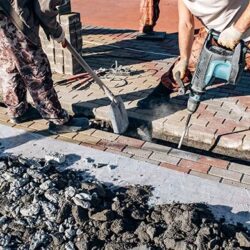Structural steel is vital in creating durable and dependable structures in Australia. From buildings, bridges, homes and warehouses, steel provides the strength and versatility needed to create safe and sustainable structures.
Builders, owners and architects are turning to structural steel not just as an alternative product but because it benefits their project with reduced build time and a level of durability, sustainability and design flexibility.
What is Structural Steel?
Structural steel is shaped and formed steel that is amenable to a number of processes to create a variety of shapes such as beams, columns, channels, angles and many more to create the skeleton of a building or similar construction.
In Australia, companies like Prime Steel Frames & Trusses are working to supply structural steel for safe and reliable construction framing.
Why Use Structural Steel?
Here are just a few of the key reasons why structural steel is a widely used material in structural steel construction in Australia:
Strength to weight ratio: Steel, when compared to its weight, provides an impressive strength to weight ratio for structures, enabling lighter structures to carry heavier loads.
Durability: Steel is more durable than most materials, it generally better resists inclement weather conditions like wind, and fire (when treated), and insect attack.
Flexibility: Steel can be shaped and connected in many different manners which allows architects and builders flexibility in design.
Speed: It is often quicker to construct with prefabricated steel parts. Since less work is completed on-site, it is a time-saver.
Sustainability: Steel is recyclable. There is less waste, and many steel products in Australia are made from recycled materials.
Types of Structural Steel
Below are some common shapes or forms of structural steel that are used in construction:
Beams: Long pieces of steel placed horizontally that support either floors or roofs.
Columns: Vertical support.
Angles: L- or V-shaped steel that is often used for bracing or smaller support.
Channels: U-shaped steel that is used in frames or other supports.
How Structural Steel is Manufactured & Installed
Design / Engineering: Engineers do calculations to determine what shapes, sizes, and steel grades are required in accordance with Australian codes and standards.
Fabrication: Steel is cut, welded, bent, or shaped in a factory setting using prefabrication for accuracy and fast manufacturing.
Transportation of Steel: The fabricated steel parts are transported to the job site.
Assembling / Installing: Workers use cranes and elevated work platform lifts to assemble prefabricated structural steel frames on the construction site. The connections for pieces of structural steel are made by bolting and welding.
Finishing & Protecting: Finished steel is galvanised (zinc coated) painted or treated to prevent rust and corrosion. Maintenance is key to longevity.
Sites of Structural Steel Usage Across Australia:
Residential construction: For example, steel frames for houses which allow for open spaces, high ceilings or large spans.
Commercial construction: Offices or commercial buildings created with structural steel will allow for open areas, multiple levels/ floors and are suited to have the strength to support load bearing areas.
Industrial construction: Garages, warehouses, factories, workshops all require the strength and durability of structural steel along with clear spans to allow for work space.
Infrastructure: Bridges, large awnings, structural supports (columns, beams) that are part of public buildings.
Safety and Standards:
Australia has laid out regulations and codes for structural steel work to assist with safe structures:
- Engineers that are designing, must use standards such as (AS/NZS) Australian/New Zealand Standards for designing steel.
- Safety procedures for workers, this includes safe lifting, safe welding and general safety procedures, PPE.
- Regular inspections will need to be carried out to check for corrosion, damage or weaknesses.
Sustainability and Environmental Benefits:
Structural steel can support environmental benefits:
Recyclable: Steel can be reused or recycled multiple times without losing its integrity or functionality.
Less waste: A careful use of design, prefabrication and precision fabrication will allow for less waste.
Longevity: If proper in design and maintenance, many structural steel structures will last a lifetime or longer, reducing the need for replacements.
Energy efficiency: Using appropriate materials such as structural steel may sometimes mean you can insulate your frame and better design the building to target the heating for the winter climate or the cooling for the summer.
Things to Consider
Cost: Structural steel could cost more upfront than some materials (like timber), but time, labour or long-term maintenance saves.
Corrosion: Steel can corrode easily in humid and coastal areas. Good protection is required. Salt air can corrode untreated metal.
Thermal performance: Steel is a conductor of heat and depending on thermal break insulation may affect how hot/cool buildings can be.
Design Constraints: Steel is flexible and offers a lot of design options but engineers do need to carefully design connections and load paths. Engineers also need to consider things like wind or earthquakes (or if located in suitable regions).
Conclusion
Structural steel is one of the most important structural materials for modern Australian construction. Built to last, it offers strength, flexibility, durability and may be sustainable.
Home-builders, commercial projects, or infrastructure projects, using quality structural steel and with good design, fabrication and protection can make an enormous difference.




